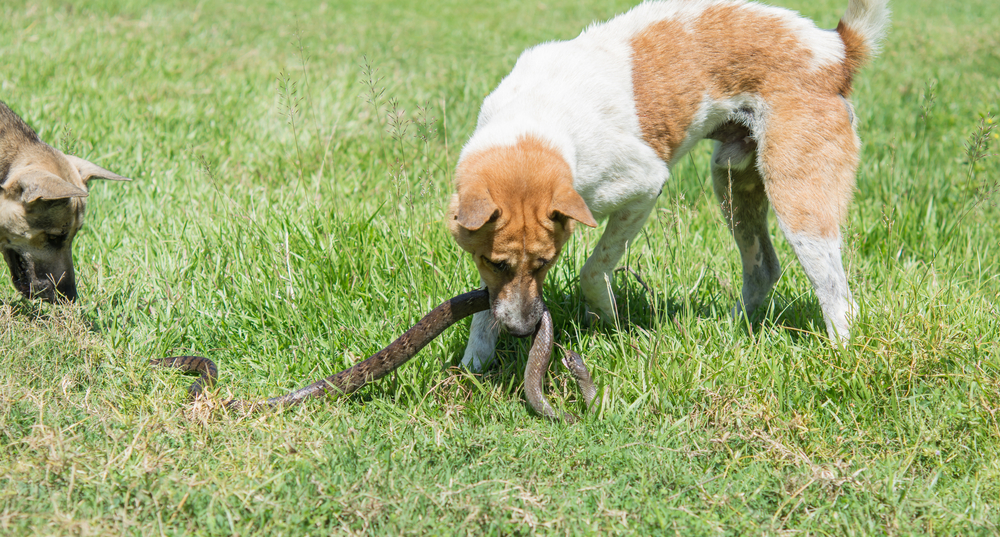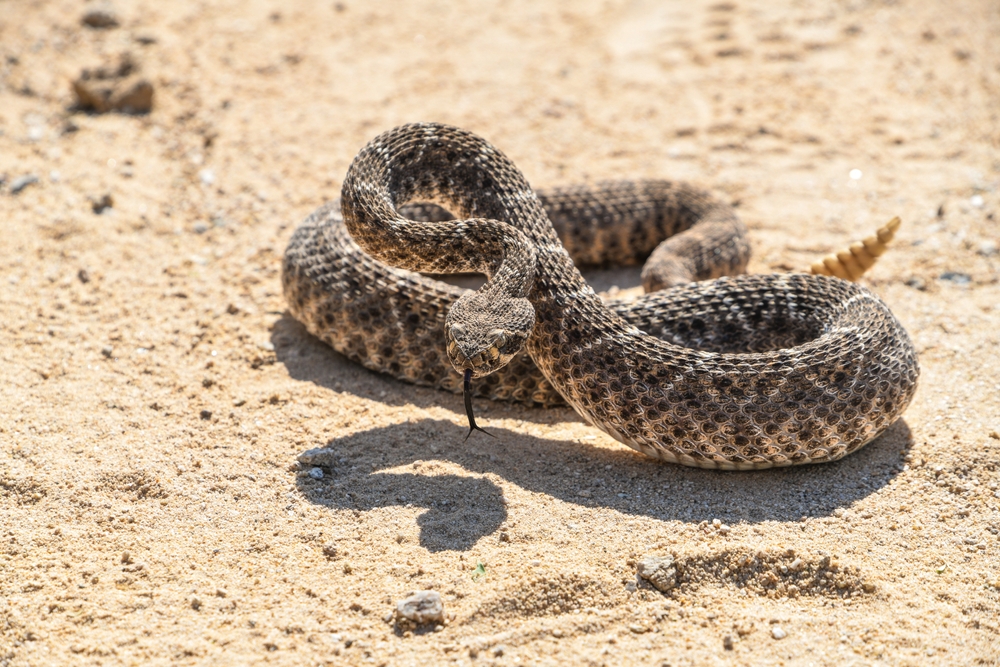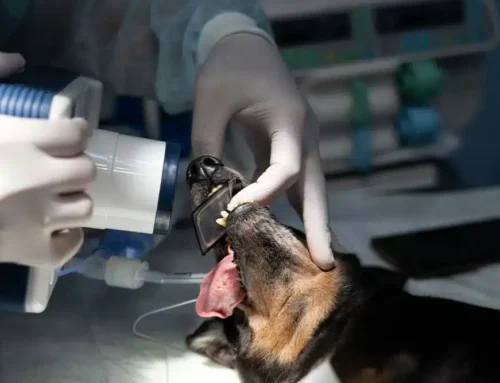Nevada is home to several rattlesnake species, which can pose a serious, life-threatening emergency for your pet. Our Peak Pet Urgent Care team wants you to be prepared if you and your pet encounter a rattlesnake. We explain everything you need to know about rattlesnakes in our area, as well as tips to protect your four-legged friend.
Nevada rattlesnakes
Understanding rattlesnake behavior, habitat, and identifying features is important to help ensure your pet’s safety while enjoying the outdoors. Common rattlesnake species in our area include:
- Western Diamondback — The Western Diamondback rattlesnake is known for its distinctive diamond-shaped patterns along its back and its black and white banded tail. They prefer arid deserts, grasslands, and rocky areas. These snakes are typically active from spring through fall, and often bask in the sun or hide under rocks.
- Mojave — Mojave rattlesnakes are light-colored with a darker diamond pattern, a well-defined stripe along the side of their head, and a greenish hue. They are found in desert regions, scrublands, and near water sources. Mojave rattlesnakes are active during warmer months and often nocturnal in hot weather.
- Great Basin — These reptiles have variable coloration but generally feature blotches or bands that are brown, gray, or tan. They prefer rocky hillsides, valleys, and sagebrush areas. Great Basin rattlesnakes are often found near rodent burrows or rocky outcrops, and are primarily active during the day in cooler months and nocturnal during the heat.
- Sidewinder — Sidewinder rattlesnakes are recognizable by their distinctive sideways movement, horn-like scales above their eyes, and sandy color. They prefer deserts and dunes and are nocturnal and active in the cooler hours of the evening and night.
Rattlesnake bite signs in pets
Rattlesnake bites can deliver a potent venom that affects the blood, nervous system, and tissues, leading to severe signs and complications. Potential signs include:
- Swelling and bruising — Rapid and severe swelling around the bite site may occur, accompanied by bruising.
- Pain and lethargy — Many affected pets experience intense pain that they express through vocalization, limping, and reluctance to move.
- Bleeding — Puncture wounds caused by the snake’s fangs may bleed excessively.
- Drooling and vomiting — The venom may cause increased salivation and vomiting.
- Breathing difficulties — In some cases, pets experience difficulty breathing, excessive panting, or respiratory distress.
- Neurologic signs — Severe cases can lead to weakness, tremors, seizures, and collapse.
Rattlesnake bite first aid for pets
If you know or suspect a rattlesnake has bitten your pet, follow these steps:
- Stay calm — Stay calm, so you can care for your pet and minimize their activity to slow the venom spread.
- Identify the snake — If possible and safe, identify the snake from a distance. Do not attempt to capture or kill the snake.
- Seek immediate veterinary care — Rattlesnake bites should be treated by a veterinarian as soon as possible. Contact our Peak Pet Urgent Care team immediately.
- Reduce venom circulation — If feasible, keep the bite site lower than your pet’s heart to reduce venom circulation.
- Avoid ice and tourniquets — Applying ice or tourniquets to the bite site can worsen tissue damage.
Rattlesnake bite prevention in pets

Reduce your pet’s rattlesnake bite risk by following these tips:
- Avoid high-risk areas — Stay away from known rattlesnake habitats, especially during the warmer months when the snakes are more active.
- Use a leash — Keep your dog leashed during walks, especially in prevalent rattlesnake areas.
- Stay on trails — Stick to well-trodden paths and avoid tall grass, rocks, and brush where snakes may hide.
- Rattlesnake avoidance training — Consider professional training so your dog can recognize and avoid rattlesnakes.
- Clear your yard — Keep your yard free of debris, tall grass, and wood piles that could attract snakes.
Rattlesnake bites are a serious emergency for pets and require immediate veterinary care. Contact our Peak Pet Urgent Care team if your pet is bitten.






Leave A Comment